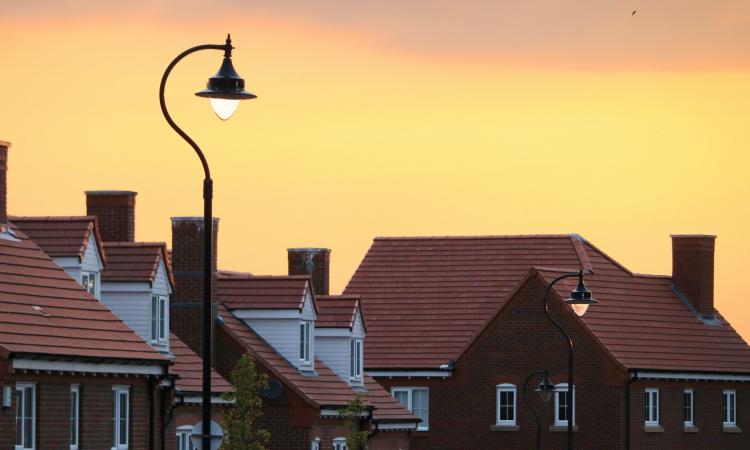The lockdown in response to Covid-19 has pushed the UK economy into a sharp recession, according to Schroders' Q2 2020 report.
GDP fell by a fifth in April and unemployment is rising as companies make redundancies. In addition, 12 million people have a job, but are not working and are relying on temporary income support from the government. The increase in public spending and drop in tax revenues meant that government borrowing jumped to £104 billion in April-May 2020, although the simultaneous fall in bond yields has helped limit the cost of servicing this debt.
Schroders forecasts that GDP will grow by 16% in the second half of 2020 and by 6% in 2021, as people who are in work start to spend more on discretionary items and as the government increases investment in infrastructure, in order to reduce regional inequalities. The economy should get back to its pre-virus level by mid-2022. The main upside risk is that scientists succeed in developing a vaccine, or effective treatment for Covid-19 before the end of this year. There are three downside risks. First, a national second spike in infections. A lot will depend on the quality of the government’s testing and tracing systems. Second, a wave of insolvencies, as weak companies fail and there is then a domino effect, as well capitalised businesses are sunk by bad debts. Third, the UK and EU could fail to reach a trade deal before the end of 2020, leading to a hard Brexit.
The lockdown and collapse in revenues has meant that some businesses have not paid rent and service charges. The government’s decision to ban the eviction of tenants until the end of September may also be a factor. Retailers have been most likely to defer rent and service charge payments, while most office occupiers have paid in full. Industrial tenants fall somewhere in the middle. In total most balanced funds collected between 65-80% of the rent due on the March quarter day, including agreements to pay rent monthly, rather than quarterly in advance. In addition, some rent was written off, because tenants agreed to extend their lease, or remove a forthcoming break clause. We expect a similar pattern for the June quarter day.
Covid-19 has accelerated the growth in on-line retailing and increase in structural vacancy. The market share of on-line sales jumped to 33% in May 2020 from 19% in 2019 and while some of that will unwind as non-essential shops re-open, some people will remain hesitant about visiting stores. Footfall in the second half of June was 30-40% lower than in the same period of last year. The last month has seen several retailer insolvencies, particularly in the fashion sector and we expect that to continue over the next six months, leading to more empty units and a further big fall in open market rental values. Bulky good retail parks will probably be more defensive than shopping centres, partly because they have little exposure to fashion retailers, partly because they are open air rather than enclosed and partly because rents and service charges are more affordable. In the long-term we are likely to see more turnover based rents, but that will require retailers to share sales figures and agreement on how to treat goods which were bought on line, but returned in store.
The surge in internet sales during lockdown helped support demand for warehouses, both from supermarkets and pure on-line retailers. Amazon committed to two large fulfilment centres and seven smaller delivery warehouses in the first half of 2020, more space than it took in 2019. The NHS was also very active taking temporary warehouse space to store medical supplies. However, on the downside, manufacturers who account for around 30% of industrial space have been hit hard by the lockdown and Brexit presents them with further uncertainty. The last 12 months have also seen a limited increase in vacant industrial space, mainly in the South West and Midlands, as occupiers have moved into brand new logistics units and their old warehouses stand empty. As a result, we expect industrial rental growth to pause in the short term, before resuming in 2022.
In the office sector, the immediate question is how many people can a building accommodate safely and how many people need to continue working from home? While the answer varies according to design (e.g. towers require people to use lifts), most offices can probably only safely accommodate between 25[(-40) was not found] of staff. The other constraint is how reliant are people on public transport to travel to work? That is likely to be more of an issue in central London where around 80% of commuters use public transport than in regional cities where public transport is more limited and the majority of people either drive to the office (e.g. Birmingham), or cycle (e.g. Cambridge).
Taking a longer term view, we doubt whether the current experiment with remote working will lead to a step change in office demand after the virus. While it will be more common for people to work from home occasionally, we do not expect it to become the norm. The office is the best place to communicate with colleagues, spark new ideas, train staff and meet with clients. Many occupiers including big tech (e.g. Amazon, Apple, Google) have invested heavily in new offices in order to attract and retain staff. We anticipate that the demand for offices in city centres and close to universities will increase once the virus is brought under control, driven by the growth in tech, life sciences, professional services and public administration.
Investment transactions fell sharply during the lockdown, given the uncertainty over the economy and the difficulties of conducting site visits and other due diligence. In April and May there were just 50-60 investment deals per month, compared with over 200 in a normal month. The lack of transactions coupled with some tenants deferring rent meant that valuers decided to apply material uncertainty clauses. That in turn forced open-ended funds to suspend dealing of primary shares. We are now starting to see a recovery in transactions, at least where the tenant has a strong covenant and paid rent through the lockdown. Consequently, valuers have lifted the material uncertainty clause on industrial assets and we expect that office and retail will follow over the next couple of months. The sale of shopping centres formerly owned by Intu should help price discovery.
We expect that real estate yields will now rise despite the low level of bond yields, as investors price-in potential falls in rental income - albeit they should be short-lived in the office and industrial sectors. Given the uncertainty over the economy it is difficult to know how far capital values will fall, but our working assumption is that, on average, they will decline by 10-15% in 2020 and then stabilise in 2021. Industrial and regional office are likely to be the most defensive sectors, assuming rents are broadly flat, while retail and leisure will probably be the weakest. Looking forward to 2021, London offices could be one of the best performing sectors, if foreign investors start to bid down yields, assuming there is then greater clarity on Brexit.

